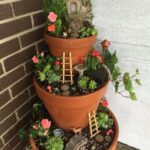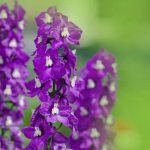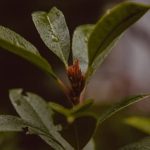Looking to bring life to the shaded areas in your garden? In this article, we will explore gardening ideas for shaded areas, providing valuable tips and advice on how to create a flourishing garden even in the absence of direct sunlight. From understanding the challenges of gardening in shaded areas to designing a visually appealing garden and maintaining its health, we’ve got you covered with all the essential information you need.
Gardening in shaded areas presents unique challenges that require careful consideration and planning. Understanding the specific needs of plants that thrive in low-light conditions is crucial for creating a successful shaded garden. Whether it’s partial shade, full shade, or dappled shade, assessing the level of shade in your garden is the first step towards choosing the right plants and designing an attractive outdoor space.
In this comprehensive guide, we will delve into suitable plants for shaded areas, from perennials and annuals to shrubs and trees. We will also provide valuable insights on designing a shaded garden that is both visually appealing and functional.
Additionally, we will discuss maintenance tips for keeping your shaded garden healthy, as well as container gardening ideas for maximizing space in limited light conditions. Get ready to discover how creativity and careful planning can transform shaded areas into thriving outdoor spaces.
Assessing the Shade Level in Your Garden
When it comes to gardening in shaded areas, one of the most important steps is to accurately assess the level of shade in your garden. Understanding the type of shade you are dealing with will help you select the right plants and design a garden that thrives in these conditions.
Here are some common types of shade levels and how to identify them:
- Partial Shade: Areas that receive 3-6 hours of sun per day, usually with dappled sunlight or sunlight filtered through trees.
- Full Shade: Areas that receive less than 3 hours of direct sun per day, often found under dense tree canopies or on the north side of buildings.
- Dappled Shade: Areas that receive shifting patterns of sunlight throughout the day due to overhead trees or structures.
Once you have identified the shade level in your garden, you can then choose plants that are suitable for these conditions. For partial shade areas, consider plants like hostas, astilbes, and impatiens. In full shade areas, look for plants such as ferns, begonias, and coral bells. Dappled shade areas can support a wide range of plants including bleeding heart, foxglove, and hellebores.
Understanding the different shade levels in your garden will allow you to make informed decisions when choosing plants and designing your shaded garden. By carefully assessing the unique conditions of your shaded area, you can create a beautiful and thriving garden that makes the most of its unique environment.
Suitable Plants for Shaded Areas
When it comes to gardening in shaded areas, choosing the right plants is crucial for a successful and thriving garden. Whether your garden has partial shade, full shade, or dappled shade, there are a variety of plants that can thrive in these conditions.
For perennials in shaded areas, some popular options include hostas, astilbes, and ferns. These plants not only add texture and color to the garden but also require minimal maintenance once established. Additionally, annuals such as impatiens, begonias, and coleus are excellent choices for adding pops of color to shaded areas.
Shrubs play an essential role in shaded gardens by adding structure and height. Some suitable options for shaded areas include azaleas, hydrangeas, and rhododendrons. These shrubs not only thrive in shady conditions but also provide beautiful blooms throughout the growing season.
When it comes to trees for shaded areas, consider planting varieties such as dogwood, redbud, or Japanese maple. These trees not only provide much-needed shade but also add visual interest and height to the garden.
By carefully selecting perennials, annuals, shrubs, and trees that thrive in shaded conditions, you can create a lush and vibrant garden even in the shadiest of areas. Whether you prefer a more structured or natural-looking garden design with careful planning and creative selection of suitable plants; you can transform any shady area into a beautiful green retreat.
Designing a Shaded Garden
One of the first things to consider when designing a shaded garden is the layout and arrangement of plants. Since sunlight is limited in shaded areas, it’s important to choose plants that thrive in low light conditions. Consider incorporating a variety of textures, heights, and colors to add visual interest to the garden. Utilize different layers such as ground cover, mid-height plants, and taller specimens to create depth and dimension.
In addition to plant selection, the use of hardscaping elements can also enhance the overall design of a shaded garden. Pathways, decorative rocks or pebbles, and strategically placed ornaments or garden art can add structure and focal points to the space. Incorporating seating areas or garden benches can also make the shaded garden more inviting and functional for relaxation or entertaining.
Furthermore, paying attention to the natural features of the site can help in designing a successful shaded garden. Work with existing trees or structures to create natural shade patterns and take advantage of dappled light effects. Consider adding water features such as fountains or ponds to capitalize on the reflective quality of water in shaded areas, adding another layer of interest and tranquility to the space.
By carefully considering plant selection, incorporating hardscaping elements, and working with natural features, it’s possible to create an aesthetically pleasing and functional shaded garden that takes full advantage of its unique growing conditions while providing an enjoyable outdoor space for relaxation and enjoyment.
Maintenance Tips for Shaded Gardens
When it comes to gardening in shaded areas, one of the key factors to consider is how to properly maintain the plants and ensure their health and growth. In this section, we will discuss some essential maintenance tips for shaded gardens, focusing on watering, soil quality, and pest control.
Watering
In shaded gardens, the soil tends to retain moisture for longer periods compared to sunny areas. While this can be beneficial in some ways, it’s important not to overwater the plants, as this can lead to root rot and other issues. It’s essential to monitor the soil moisture levels regularly and water the plants only when necessary. Consider using a moisture meter to accurately determine when watering is needed.
Soil Quality
The type of soil in shaded areas can vary greatly, but most often it tends to be on the acidic side due to the decaying organic matter from fallen leaves and shade-loving plants. It’s crucial to regularly test the soil pH and make adjustments as needed by adding lime or sulfur. Additionally, incorporating organic matter such as compost into the soil can help improve its structure and fertility, providing essential nutrients for plant growth.
Pest Control
Shaded gardens are also prone to certain pests and diseases that thrive in moist and cool environments. Regularly inspect your plants for any signs of pests or diseases such as powdery mildew or aphids. Consider using natural remedies like neem oil or insecticidal soap to control pests without harming beneficial insects. Proper air circulation through pruning and removing dead plant material can also help prevent the spread of diseases.
By paying close attention to watering, soil quality, and pest control in shaded gardens, you can ensure that your plants thrive despite the challenges of low light levels. Implementing these maintenance tips will contribute greatly towards a successful garden full of lush greenery even in shady areas.
Container Gardening for Shaded Areas
Container gardening is an excellent way to maximize space and utilize different types of containers when it comes to gardening in shaded areas. Whether you have a small balcony or a limited garden space, container gardening allows you to grow a variety of plants in shaded areas.
Choosing the Right Containers
When it comes to container gardening in shaded areas, it’s important to choose the right containers for your plants. Consider using pots, hanging baskets, window boxes, or even repurposed items such as buckets and barrels. Ensure that the containers have proper drainage to prevent waterlogged soil, which can be detrimental to shade-loving plants.
Plant Selection for Containers
Selecting suitable plants for container gardening in shaded areas is crucial. Look for shade-loving annuals and perennials such as begonias, ferns, hostas, and impatiens. Consider mixing different plant heights and textures to create visually appealing container arrangements.
Care and Maintenance
Proper care and maintenance are essential for successful container gardening in shaded areas. Be mindful of watering requirements as shaded areas may not receive as much rainfall. Additionally, consider using high-quality potting mix specifically designed for shade-loving plants. Regularly monitor for pests and diseases that may thrive in shaded conditions.
By embracing container gardening in shaded areas with creativity and careful planning, you can create a flourishing garden even in the absence of direct sunlight. With the right containers, plant selection, and maintenance practices, you can enjoy a beautiful and bountiful garden despite the challenges presented by shady spaces.
Incorporating Shade-Loving Plants Into Different Garden Styles
When it comes to creating a garden in shaded areas, incorporating shade-loving plants into different garden styles can be a rewarding challenge. Whether you’re aiming for a serene Japanese garden or a quaint English cottage garden, there are plenty of plants that thrive in low light conditions.
In a Japanese garden, the key is to create a sense of calm and tranquility. To achieve this, incorporate shade-loving plants such as ferns, hostas, and Japanese maples. These will not only thrive in the shaded environment but will also contribute to the peaceful ambiance that Japanese gardens are known for. Additionally, consider adding elements such as bamboo fences or stone lanterns to enhance the authenticity of your Japanese garden.
On the other hand, if you’re looking to create an English cottage garden in a shaded area, opt for classic shade-loving flowers like foxgloves, bleeding hearts, and astilbes. These plants are not only well-suited for shaded environments but will also add color and charm to your garden. Add winding pathways and wooden trellises draped with climbing vines to evoke the cozy and rustic feel of an English cottage garden.
Ultimately, incorporating shade-loving plants into different garden styles requires careful consideration of plant choices and design elements that complement the overall theme of the garden. Whether you lean toward a Japanese-inspired retreat or an English countryside escape, there are numerous options for creating a lush and beautiful shaded garden.
| Garden Style | Recommended Plants |
|---|---|
| Japanese Garden | Ferns, hostas, Japanese maples |
| English Cottage Garden | Foxgloves, bleeding hearts, astilbes |
DIY Shade Structures
Creating shade in your garden can be necessary for the health and growth of certain plants, as well as for creating a comfortable outdoor space. DIY shade structures such as pergolas, trellises, and other creative solutions can provide relief from the sun and add visual interest to your garden. Here are some ideas for creating shade in your garden with these DIY structures.
Pergolas are a popular choice for providing shade in gardens. These open structures can be used to support climbing plants like vines and roses, adding beauty and fragrance to your garden while also offering relief from the sun. When building a pergola, consider using materials like wood, metal, or vinyl depending on your desired aesthetic and climate.
Trellises are another great option for creating shade in your garden. These latticework structures can be placed against walls or fences, providing support for climbing plants and creating a natural canopy of foliage. Trellises come in various materials such as wood, metal, and PVC, making them versatile and suitable for different garden styles.
In addition to pergolas and trellises, there are numerous other creative solutions for adding shade to your garden. Consider using umbrellas or sail shades for temporary shade in specific areas of your garden. You can also repurpose old materials like wooden pallets or reclaimed driftwood to create unique and sustainable shade structures that reflect your personal style.
| DIY Shade Structures | Materials |
|---|---|
| Pergolas | Wood, metal, vinyl |
| Trellises | Wood, metal, PVC |
Conclusion
In conclusion, gardening in shaded areas presents unique challenges, but with the right approach, it can be incredibly rewarding. By understanding the level of shade in your garden and selecting suitable plants, you can create a lush and vibrant oasis even in areas with limited sunlight. It’s important to emphasize the need for creativity and careful planning when designing a shaded garden, as this will ensure that your efforts yield beautiful and sustainable results.
When it comes to gardening ideas for shaded areas, one key takeaway is the importance of selecting the right plants. By choosing shade-loving perennials, annuals, shrubs, and trees that thrive in low light conditions, you can create a diverse and visually appealing garden. Additionally, considering maintenance tips such as watering techniques, soil quality, and pest control will help ensure the long-term health of your shaded garden.
Incorporating shade structures and utilizing container gardening techniques are also effective strategies for maximizing space and creating an inviting atmosphere in shaded areas. Furthermore, integrating shade-loving plants into different garden styles opens up endless possibilities for creating unique and personalized outdoor spaces. Overall, with careful consideration and a bit of ingenuity, successful gardening in shaded areas is not only possible but can result in stunning and tranquil retreats within your own backyard.
Frequently Asked Questions
What Do You Put in a Shaded Area of a Garden?
In a shaded area of a garden, it’s best to plant shade-loving plants such as hostas, ferns, and certain types of flowering plants like impatiens or begonias. These plants thrive in low light conditions and can bring color and texture to your shaded garden.
Which Plant Grows Best in Full Shade?
When it comes to full shade, some plants that grow best are native ferns, such as lady fern or maidenhair fern. Additionally, groundcovers like creeping myrtle or periwinkle can also thrive in areas with little to no direct sunlight. These plants not only add greenery but also help with weed control in shaded areas.
How Do I Make a Garden in My Shaded Yard?
Making a garden in a shaded yard may require some thoughtful planning. Start by assessing the type of shade – is it dappled, partial, or full? Then choose plants that are suitable for the level of shade present.
Consider adding elements like pathways, seating areas, and decorative features to enhance the appeal of your shaded garden space. And don’t forget to provide proper soil, water, and nutrients for your shade-loving plants to thrive.

Welcome to my gardening blog! I am passionate about plants and enjoy sharing my knowledge and experiences with others. In this blog, I will write about everything related to gardening, from tips on how to get started to updates on my own garden projects.





